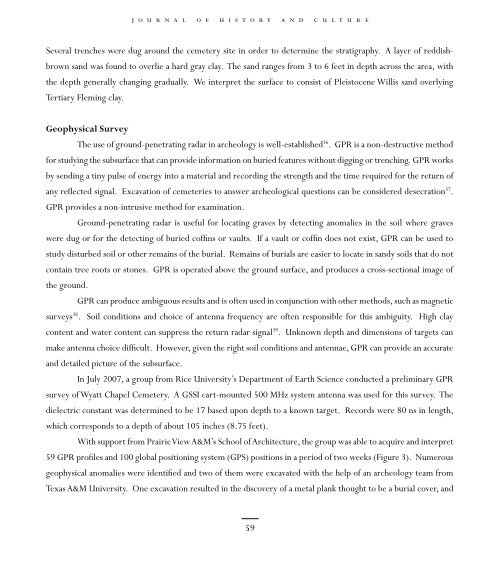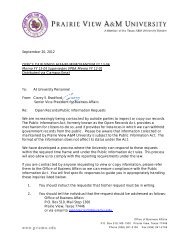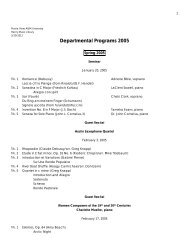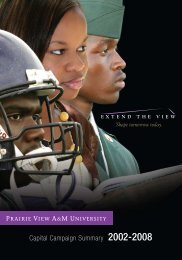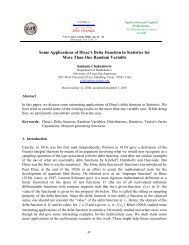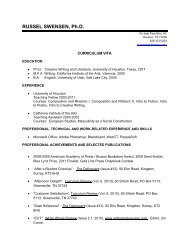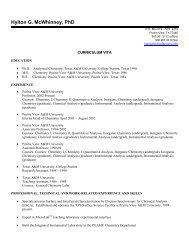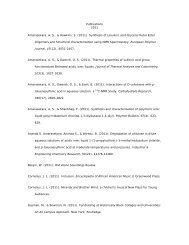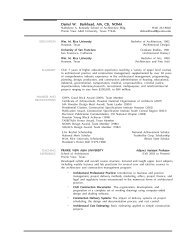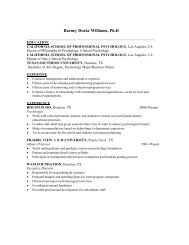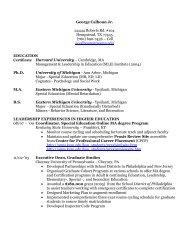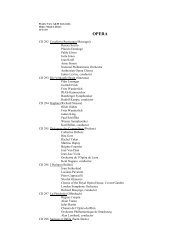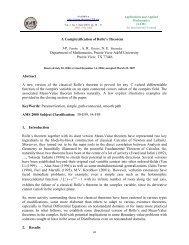Journal of History and Culture Journal of History and Culture
Journal of History and Culture Journal of History and Culture
Journal of History and Culture Journal of History and Culture
Create successful ePaper yourself
Turn your PDF publications into a flip-book with our unique Google optimized e-Paper software.
j o u r n a l o f h i s t o r y a n d c u l t u r e<br />
Several trenches were dug around the cemetery site in order to determine the stratigraphy. A layer <strong>of</strong> reddish-<br />
brown s<strong>and</strong> was found to overlie a hard gray clay. The s<strong>and</strong> ranges from 3 to 6 feet in depth across the area, with<br />
the depth generally changing gradually. We interpret the surface to consist <strong>of</strong> Pleistocene Willis s<strong>and</strong> overlying<br />
Tertiary Fleming clay.<br />
Geophysical Survey<br />
The use <strong>of</strong> ground-penetrating radar in archeology is well-established 36 . GPR is a non-destructive method<br />
for studying the subsurface that can provide information on buried features without digging or trenching. GPR works<br />
by sending a tiny pulse <strong>of</strong> energy into a material <strong>and</strong> recording the strength <strong>and</strong> the time required for the return <strong>of</strong><br />
any reflected signal. Excavation <strong>of</strong> cemeteries to answer archeological questions can be considered desecration 37 .<br />
GPR provides a non-intrusive method for examination.<br />
Ground-penetrating radar is useful for locating graves by detecting anomalies in the soil where graves<br />
were dug or for the detecting <strong>of</strong> buried c<strong>of</strong>fins or vaults. If a vault or c<strong>of</strong>fin does not exist, GPR can be used to<br />
study disturbed soil or other remains <strong>of</strong> the burial. Remains <strong>of</strong> burials are easier to locate in s<strong>and</strong>y soils that do not<br />
contain tree roots or stones. GPR is operated above the ground surface, <strong>and</strong> produces a cross-sectional image <strong>of</strong><br />
the ground.<br />
GPR can produce ambiguous results <strong>and</strong> is <strong>of</strong>ten used in conjunction with other methods, such as magnetic<br />
surveys 38 . Soil conditions <strong>and</strong> choice <strong>of</strong> antenna frequency are <strong>of</strong>ten responsible for this ambiguity. High clay<br />
content <strong>and</strong> water content can suppress the return radar signal 39 . Unknown depth <strong>and</strong> dimensions <strong>of</strong> targets can<br />
make antenna choice difficult. However, given the right soil conditions <strong>and</strong> antennae, GPR can provide an accurate<br />
<strong>and</strong> detailed picture <strong>of</strong> the subsurface.<br />
In July 2007, a group from Rice University’s Department <strong>of</strong> Earth Science conducted a preliminary GPR<br />
survey <strong>of</strong> Wyatt Chapel Cemetery. A GSSI cart-mounted 500 MHz system antenna was used for this survey. The<br />
dielectric constant was determined to be 17 based upon depth to a known target. Records were 80 ns in length,<br />
which corresponds to a depth <strong>of</strong> about 105 inches (8.75 feet).<br />
With support from Prairie View A&M’s School <strong>of</strong> Architecture, the group was able to acquire <strong>and</strong> interpret<br />
59 GPR pr<strong>of</strong>iles <strong>and</strong> 100 global positioning system (GPS) positions in a period <strong>of</strong> two weeks (Figure 3). Numerous<br />
geophysical anomalies were identified <strong>and</strong> two <strong>of</strong> them were excavated with the help <strong>of</strong> an archeology team from<br />
Texas A&M University. One excavation resulted in the discovery <strong>of</strong> a metal plank thought to be a burial cover, <strong>and</strong><br />
59


